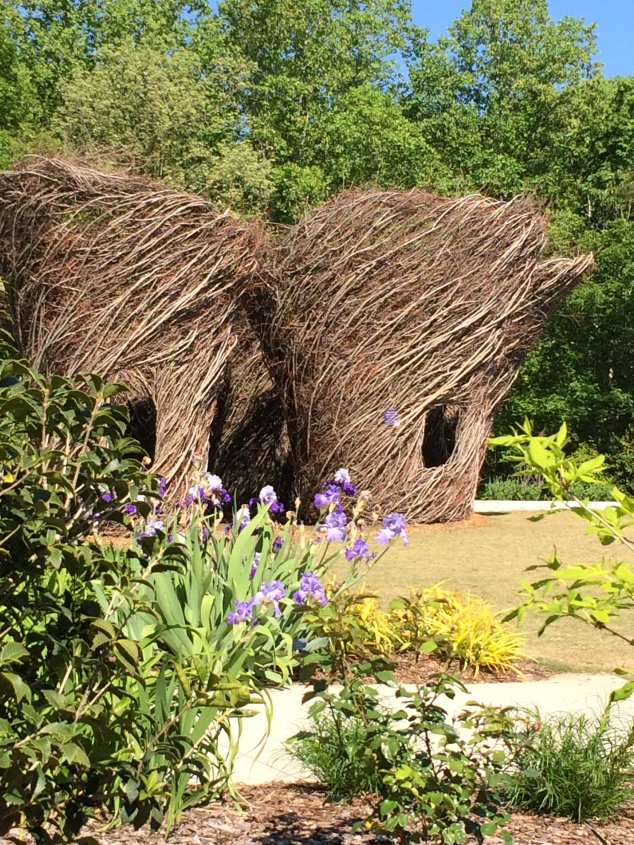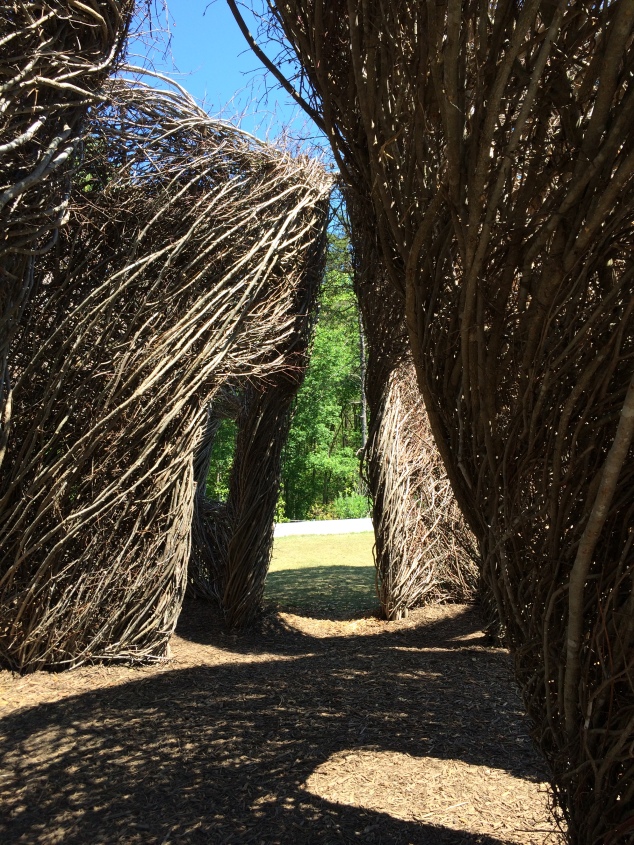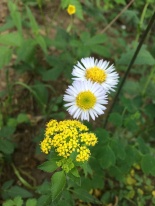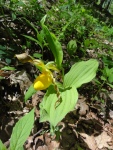View of Woven Whimsy: Stickworks by Patrick Dougherty, currently on display at the Atlanta Botanical Garden – Gainesville
♦
Woven:
Late 15th century, past participle form of weave: from the Old English wefan, meaning “to weave, form by interlacing yarn.” Cognates of weave include the Sanskrit ubhnati, “he laces together” and the Greek hyphe or hyphos, “web.” In the late 14th century weave took on the extended sense of “combine into a whole.”
Whimsy:
Circa 1600, probably related to whimwham, meaning “fanciful object” and whim, as recorded in the 1690s, meaning “caprice, fancy, sudden turn or inclination of the mind.”
I recently had the pleasure of visiting Patrick Dougherty’s “Woven Whimsy: Stickworks” at the Atlanta Botanical Garden – Gainesville. I was intrigued in part by the name of the exhibition; I am, after all, the bride who declared her wedding decor style “vintage whimsical.”
Artist Dougherty was in residence from late March until early April and created the unplanned sculpture onsite from locally harvested wood, branches, and twigs. He’s completed over 250 such sculptures and has said about working with sticks that it is “something that stirs the sense of simple shelter.” Walking inside them stirred in me the same dizzying mix of wonder, comfort, and occasional chaos that is marriage.
The sculpture creates a sense of both enclosure and openness, the whirling weave of the sticks suggesting at once movement and stillness. The outsize scale and organic simplicity places the experience somewhere between wandering beneath towering skyscrapers and exploring a cluster of fairytale cottages.
From afar, they look almost like baskets, and like all art, they hold more than the substance of their making. They feel, inside, like giant sheltering nests, if nests had doors and windows.
Nest:
Old English nest. Noun, “bird’s nest, snug retreat.” Cognates include the Sanskrit nidah, “resting place, nest.”
Nesting:
Adjective, 1650s, “making or using a nest.” Also refers to objects “fitted into one another.”
Where there is art, there is life. Long live whimsy!
All definitions adapted from the Online Etymology Dictionary.

































